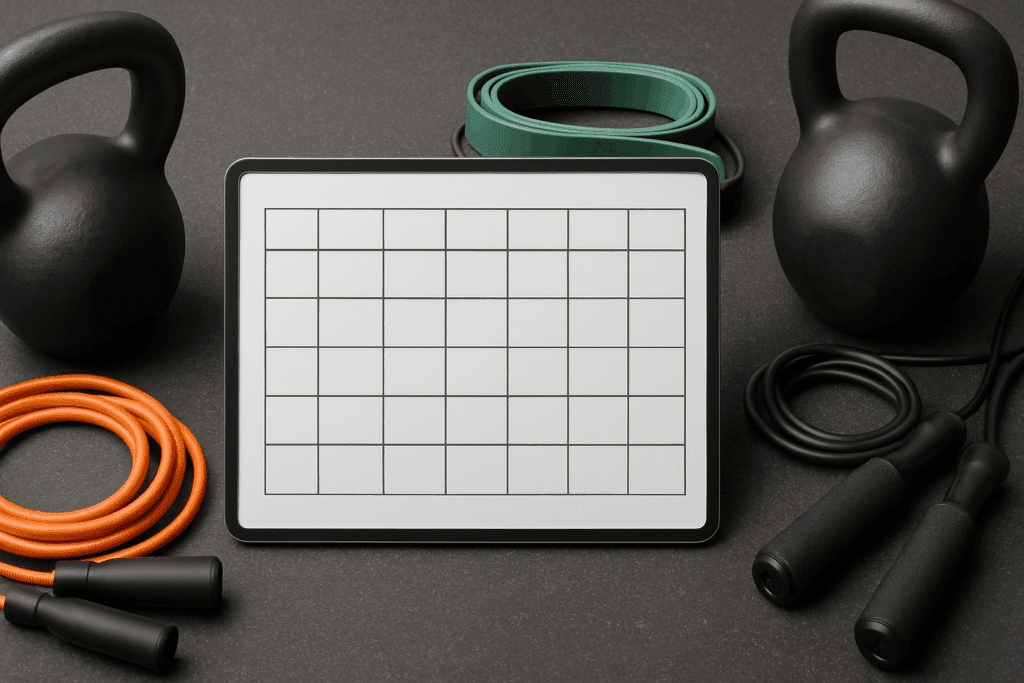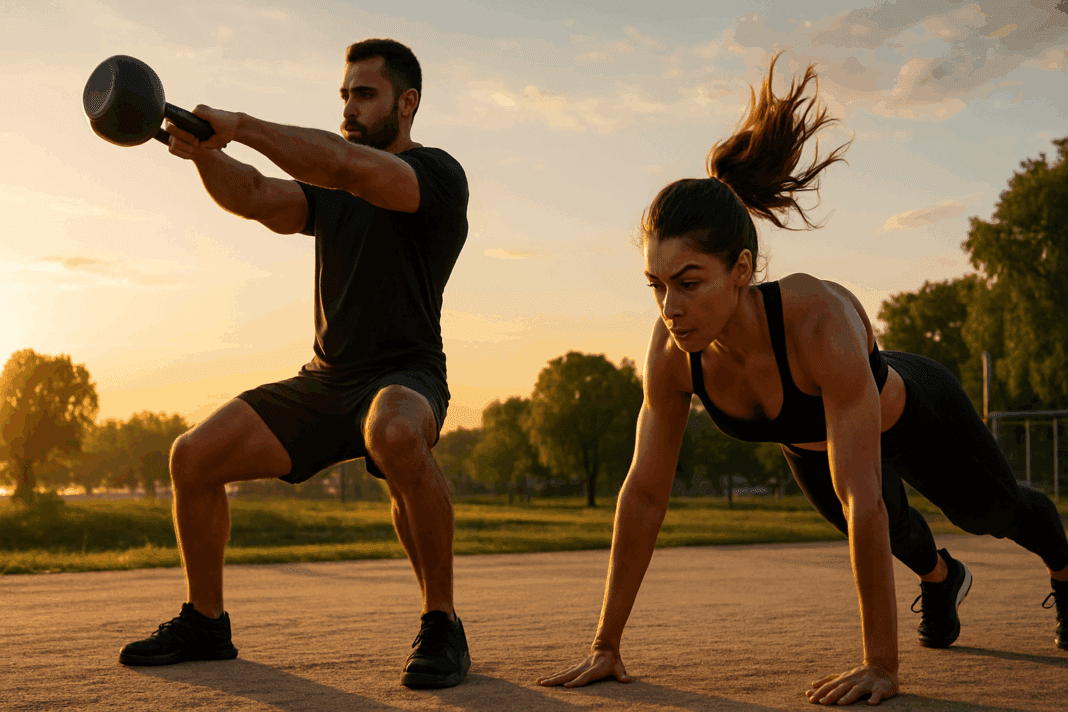High-Intensity Interval Training (HIIT) has evolved far beyond a trend in fitness culture. Today, it’s a well-established training methodology used by elite athletes, military personnel, and everyday fitness enthusiasts alike. When fused with full body weight training, HIIT becomes a powerful tool not just for burning fat or building muscle, but for boosting performance and endurance holistically. This synergy of strength and cardiovascular conditioning offers unique physiological benefits that go far deeper than surface-level results.
While traditional steady-state cardio has its place, HIIT weight lifting workouts have demonstrated measurable improvements in both anaerobic and aerobic systems. These hybrid workouts challenge your muscular system and cardiovascular endurance simultaneously, making them ideal for individuals seeking functional strength and sustainable energy levels. Whether you’re a seasoned athlete or someone returning to fitness after a hiatus, adopting a full body weight training HIIT approach can deliver transformative outcomes.
You may also like: How to Increase Stamina and Endurance Naturally: Smart Training Tips and Nutrition Habits That Support Cardiovascular Fitness

Understanding the Science Behind Full Body HIIT Exercises
To appreciate the power of HIIT workouts with weights, it’s essential to understand how the body responds to this type of stimulus. HIIT involves alternating between periods of intense exertion and short recovery, pushing the heart rate into high training zones followed by brief rests that prevent full recovery. When combined with resistance training, this format not only engages the cardiovascular system but also stimulates muscle growth and neuromuscular adaptation.
Unlike isolated resistance workouts or conventional cardio routines, a full body HIIT routine challenges multiple muscle groups in rapid succession. Compound exercises such as squats, push-ups, deadlifts, and rows form the foundation of this approach, ensuring balanced development and coordination. As the intensity ramps up, the body releases catecholamines—hormones that aid in fat metabolism—alongside increased growth hormone production, which contributes to lean muscle gains and accelerated recovery.
Furthermore, engaging in a high intensity full body workout recruits both slow-twitch and fast-twitch muscle fibers. This dual activation improves endurance and explosive power, leading to enhanced athletic performance over time. Importantly, full body HIIT exercises also elevate post-exercise oxygen consumption (EPOC), enabling the body to continue burning calories long after the session ends.

Building Endurance with Bodyweight HIIT Workouts
One of the most accessible and efficient formats for building stamina is a bodyweight HIIT workout. Requiring minimal to no equipment, these sessions emphasize controlled body movements that tax the cardiovascular system while maintaining muscular endurance. For instance, combining movements like mountain climbers, jump squats, and burpees in a timed circuit creates a highly effective full-body stimulus that encourages metabolic adaptation.
As endurance improves, these bodyweight HIIT exercises can be scaled with increased intensity or volume. The focus remains on maintaining high effort during work intervals and prioritizing form during transitions. This style of training enhances the efficiency of oxygen utilization and cardiac output, critical markers of cardiovascular health.
The portability and versatility of bodyweight HIIT workouts make them ideal for travel, busy schedules, or outdoor environments. More importantly, they are an effective gateway into more advanced HIIT weight lifting protocols. As muscular stamina and aerobic capacity develop, transitioning to more complex or resistance-based formats becomes more manageable and sustainable.
Maximizing Strength Gains with HIIT Weight Lifting Workouts
HIIT weight lifting is not only about burning calories—it is equally about cultivating raw, functional strength. Traditional strength training typically involves extended rest between sets to optimize performance. However, in HIIT strength training, these rest periods are condensed, often replaced with active recovery or alternating muscle groups. The result is a significant time-under-tension effect, which enhances hypertrophy and muscular endurance.
By integrating compound movements like kettlebell swings, weighted squats, and clean-and-press exercises into timed intervals, HIIT weight lifting workouts elicit maximal recruitment of muscle fibers. The intensity demands drive central nervous system engagement and reinforce neuromuscular efficiency, leading to improved strength across multiple movement patterns.
Additionally, the metabolic stress induced by high-rep sets within short intervals creates an environment conducive to muscle growth and increased lactic acid threshold. This adaptation is critical for athletes and recreational lifters alike, as it translates into more resilient performance across a range of physical tasks. Over time, HIIT weight training workouts develop not just muscle mass, but also muscular endurance and cardiovascular resilience.

Enhancing Cardiovascular Health Through HIIT Strength Training
The benefits of HIIT extend beyond aesthetics and performance. From a health perspective, high intensity bodyweight workouts and resistance-based routines contribute significantly to cardiovascular fitness. Repeated high-intensity efforts train the heart to pump more efficiently, improving stroke volume and lowering resting heart rate over time.
Studies have shown that participants engaging in regular HIIT routines experienced reductions in blood pressure, improved lipid profiles, and enhanced insulin sensitivity—markers directly linked to heart health. Unlike long-duration cardio, which can occasionally lead to muscle catabolism, HIIT strength training maintains or even increases muscle mass while promoting cardiovascular wellness.
Integrating full body HIIT exercises into a weekly routine doesn’t require extended time commitments either. Even a 20–30-minute session, when properly structured, can yield improvements in VO2 max and endurance performance. The key is consistency, combined with progressive overload and smart recovery strategies.

The Role of Progressive Overload in HIIT Weight Training Workouts
To ensure continued progress, HIIT weight lifting protocols must follow the principle of progressive overload. This involves gradually increasing the intensity, volume, or complexity of workouts to challenge the body and stimulate adaptation. Whether it’s by adding weight, increasing work intervals, or reducing rest time, the goal is to disrupt homeostasis enough to drive improvement without overtraining.
Incorporating progressive overload in a body weight HIIT workout may involve increasing repetitions, performing more complex movement variations, or integrating plyometric elements. For resistance-based formats, switching from moderate to heavy loads within timed intervals ensures ongoing strength development. Importantly, this progression must be matched with appropriate rest and nutritional strategies to support recovery and avoid plateaus.
Tracking performance metrics such as heart rate variability, repetition quality, and perceived exertion can help guide programming adjustments. As the body becomes more efficient, HIIT weight training workouts can evolve to reflect increased capacity, ensuring that gains in both strength and endurance are maintained.

Strategic Programming: Structuring a Full Body Weight Training HIIT Plan
Designing an effective full body weight training HIIT plan requires more than random exercise selection. To optimize results, programming should reflect an intentional balance between intensity, movement diversity, and recovery. A well-structured plan cycles through push, pull, hinge, squat, and core movements to ensure total-body activation and joint stability.
Sessions might alternate between bodyweight HIIT exercises and weighted movements across the week, allowing different energy systems to recover. For example, a Monday workout might emphasize high intensity bodyweight exercises such as jump lunges and planks, while Wednesday includes HIIT weight lifting drills like thrusters and renegade rows. This diversity not only prevents monotony but also enhances long-term adherence and physical adaptation.
The inclusion of both anaerobic bursts and aerobic components ensures that all facets of performance—power, speed, stamina, and coordination—are addressed. Incorporating mobility work, dynamic warm-ups, and post-workout stretching further contributes to injury prevention and movement efficiency, enabling sustained progress over months and years.
Mental Toughness and Cognitive Benefits of High Intensity Full Body Workouts
One often overlooked advantage of high intensity full body workouts is the mental resilience they cultivate. Pushing through fatigue, managing discomfort, and staying mentally engaged throughout challenging intervals builds psychological endurance. This toughness translates well beyond the gym, improving focus, stress resilience, and emotional regulation in everyday life.
Research has highlighted the positive cognitive effects of HIIT, including enhanced executive function, memory retention, and mood stabilization. These benefits are partially attributed to increased neurotrophic factor levels and endorphin release following intense physical exertion. Individuals who consistently engage in HIIT strength training often report greater mental clarity and motivation.
Moreover, the structured yet varied nature of full body HIIT routines helps combat workout fatigue and boredom. The element of challenge, combined with visible progress in performance metrics, fosters intrinsic motivation and discipline—qualities essential for long-term success in any domain.

Recovery and Adaptation: Keys to Sustainable Progress
While the intensity of HIIT can deliver exceptional results, recovery remains a cornerstone of sustainable training. Without adequate rest, the body is unable to repair tissues, rebalance hormones, or consolidate neuromuscular improvements. In fact, overtraining can blunt progress and increase injury risk, particularly in routines involving frequent high intensity bodyweight workouts.
To optimize recovery, practitioners should prioritize sleep, hydration, and nutrient timing. Active recovery days, such as low-intensity mobility work or walking, help maintain circulation and reduce soreness. Incorporating deload weeks every few training cycles provides both mental and physical restoration.
Monitoring signs of excessive fatigue, reduced performance, or poor sleep quality can help fine-tune recovery protocols. With strategic planning and body awareness, full body HIIT programs can be sustained long-term, yielding cumulative benefits in health, performance, and overall vitality.
Frequently Asked Questions: Full Body Weight Training HIIT for Performance and Endurance
What’s the difference between a traditional strength workout and a HIIT weight lifting workout?
Traditional strength workouts usually prioritize building muscle through heavy loads and long rest periods. In contrast, a HIIT weight lifting workout uses shorter rest intervals and incorporates fast-paced movement transitions to elevate the heart rate. This format promotes cardiovascular endurance alongside muscular development. While both training styles can increase strength, HIIT adds a conditioning component that challenges metabolic efficiency. Many athletes find that integrating HIIT weight lifting into their routine helps build work capacity and mental stamina under physical fatigue.
Can full body weight training HIIT routines replace long-duration cardio for endurance gains?
Yes, full body weight training HIIT routines can serve as an effective substitute for traditional cardio, particularly when time efficiency and overall conditioning are priorities. Unlike steady-state aerobic sessions, HIIT stimulates both anaerobic and aerobic energy systems, allowing for broader endurance improvements. Additionally, the inclusion of resistance movements boosts muscular strength in ways that running or cycling alone cannot. For example, full body HIIT routines that involve exercises like jump squats and push presses challenge muscular endurance while enhancing cardiovascular output. The result is a more well-rounded endurance base with strength benefits built in.
How can beginners safely start HIIT workouts with weights without risking injury?
Beginners should approach HIIT workouts with weights by first mastering foundational movement patterns such as squatting, hinging, pushing, and pulling. Proper technique takes precedence over intensity or speed, especially in a high-pressure format. It’s advisable to begin with a bodyweight HIIT workout to build coordination and joint stability. Once form is consistent, light weights can be introduced gradually to intensify the sessions. Structured progression, active recovery days, and consistent warm-up and cool-down practices will significantly reduce the risk of injury.
Are there specific advantages to using bodyweight HIIT exercises for athletes in non-weightlifting sports?
Absolutely. Bodyweight HIIT exercises offer sport-specific conditioning that translates well across athletic disciplines, especially those requiring agility, balance, and explosive power. Sports like soccer, basketball, or martial arts benefit from the coordination and dynamic stability developed during high intensity bodyweight workouts. Moreover, since these movements are functional and often unilateral, they promote muscular balance and injury prevention. Athletes can use a bodyweight HIIT workout to supplement skill training while minimizing equipment reliance or recovery time between sessions.
What role does heart rate monitoring play in high intensity full body workout sessions?
Monitoring heart rate during a high intensity full body workout provides insights into training zones, intensity levels, and overall cardiovascular response. It ensures that the effort aligns with HIIT’s intended purpose—alternating between near-maximal and moderate intensity. For example, a well-executed body weight HIIT workout should elevate the heart rate to 85–95% of maximum during work intervals. This data helps adjust the session’s tempo or workload and prevents overtraining. Long-term tracking also reveals improvements in recovery rate and heart rate variability, which are critical indicators of endurance adaptation.
Can HIIT strength training support muscle hypertrophy, or is it better suited for endurance and fat loss?
HIIT strength training can indeed support muscle hypertrophy, particularly when paired with moderate to heavy resistance and sufficient volume. While it’s not identical to traditional hypertrophy protocols, the mechanical tension and metabolic stress created during HIIT weight training workouts are conducive to muscle growth. Strategic use of compound lifts—performed in timed circuits—elicits both strength and size gains. Additionally, the time-efficiency of HIIT sessions allows lifters to increase training frequency without excessively taxing recovery systems. For hypertrophy-focused goals, combining HIIT weight lifting with adequate nutrition and rest is essential.
How do full body HIIT exercises influence hormonal balance and recovery?
Full body HIIT exercises have been shown to affect hormonal responses, including the release of growth hormone, testosterone, and cortisol. The intensity triggers short-term spikes in anabolic hormones, which aid in tissue repair and adaptation. However, excessive frequency without recovery may lead to chronically elevated cortisol levels, which can impair recovery and muscle retention. Incorporating recovery strategies like sleep optimization, stress management, and nutrient timing helps restore hormonal balance. Properly programmed HIIT workouts with weights support long-term hormonal health by enhancing insulin sensitivity and reducing systemic inflammation.
What are some effective strategies to periodize a full body HIIT program for year-round performance?
To optimize performance year-round, periodization of a full body HIIT program is essential. Athletes can cycle between different training emphases such as strength, endurance, power, and deload phases. For example, during off-season periods, focus might shift to high-volume HIIT weight lifting for hypertrophy and aerobic base building. Pre-season phases may emphasize high intensity full body workouts that include explosive plyometrics and speed drills. Strategic tapering and deloading phases protect against burnout and enhance peak performance during competition. Long-term planning with flexible programming ensures that HIIT workouts with weights remain sustainable and goal-oriented.
Is it possible to gain strength using only bodyweight HIIT exercises?
Yes, it is possible to build strength using only bodyweight HIIT exercises, especially when the movements are performed with intention and technical precision. Exercises like push-ups, pistol squats, and planks can be scaled to increase resistance through leverage changes or added tempo. Furthermore, the cumulative fatigue of a bodyweight HIIT workout stimulates neuromuscular adaptation that supports strength gains. Over time, advanced variations and volume progression can produce noticeable increases in functional strength. While not a complete replacement for external resistance, bodyweight HIIT remains a viable path for strength development, particularly in minimalist or calisthenics-based training contexts.
How can high-level professionals use HIIT weight training workouts to stay fit despite demanding schedules?
HIIT weight training workouts offer a highly efficient way for professionals with limited time to maintain peak fitness. A 20-minute session of full body HIIT can match or exceed the benefits of longer traditional workouts by maximizing training density and metabolic output. Executives, entrepreneurs, and other busy individuals often use these sessions to enhance energy, productivity, and cognitive function throughout the day. Integrating full body weight training HIIT into early mornings or lunch breaks helps maintain consistency despite tight calendars. The adaptability of HIIT—whether using minimal equipment or bodyweight—makes it ideal for at-home training or travel routines.
Conclusion: Transform Your Fitness with a Full Body Weight Training HIIT Approach
Incorporating a full body weight training HIIT program into your fitness regimen offers a powerful pathway to enhanced strength, endurance, and overall performance. By merging the metabolic demands of cardiovascular intervals with the muscular stimulation of resistance training, HIIT creates an unmatched training stimulus. Whether through bodyweight HIIT workouts or HIIT weight lifting protocols, this high-effort, high-reward approach delivers measurable improvements in stamina, energy, and physical resilience.
The versatility and adaptability of these routines make them accessible to individuals across all fitness levels. With proper structure, progression, and recovery, HIIT weight training workouts can be a cornerstone of sustainable health and peak physical performance. From improved heart health to greater muscle definition and sharper cognitive focus, the benefits of high intensity full body workouts extend far beyond the gym floor.
As with any training method, consistency and intentionality are key. A well-designed program rooted in scientific principles and aligned with your personal goals can transform not just your physique, but your lifestyle. Embrace the challenge, honor the recovery, and harness the full potential of HIIT strength training to elevate your performance—naturally and powerfully.
Was this article helpful? Don’t let it stop with you. Share it right now with someone who needs to see it—whether it’s a friend, a colleague, or your whole network. And if staying ahead on this topic matters to you, subscribe to this publication for the most up-to-date information. You’ll get the latest insights delivered straight to you—no searching, no missing out.
Further Reading:
How to Increase Stamina: 16 Ways to Power Up a Workout

